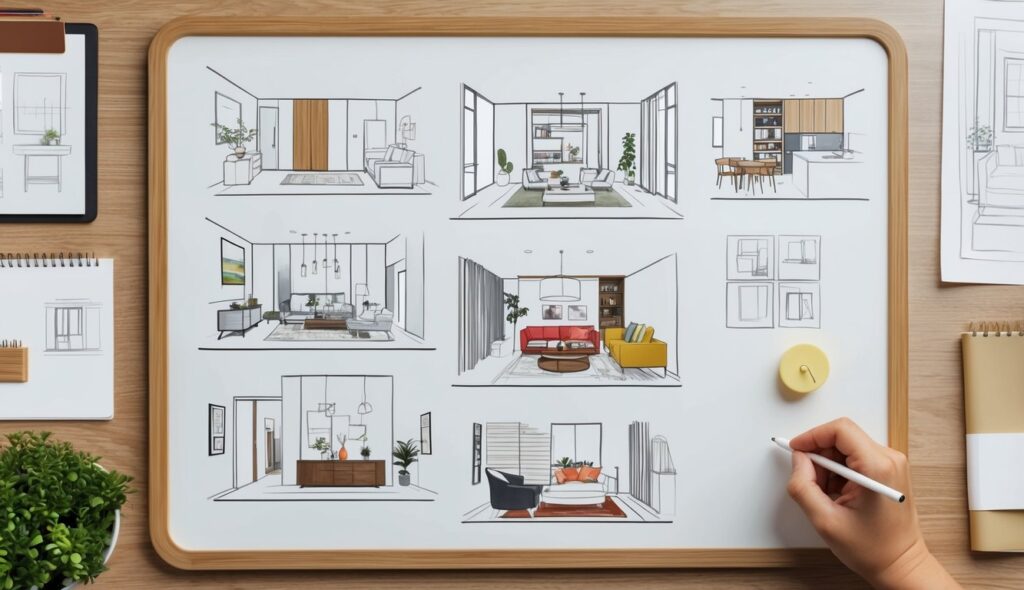Specifying blinds and shades for architectural projects involves more than just aesthetic choices; it requires careful consideration of both functional and design elements.
Remember to repin your favorite images!
Architects must take into account the size, shape, and style of windows when selecting window treatments.
For instance, using slats or shade panels provides different levels of light control and privacy, accommodating various residential and commercial needs.
The choice between blinds and shades hinges on numerous factors, such as ease of use and maintenance.
For example, cordless window shades offer modern functionality and safety advantages, particularly in homes with children.
These features make them a versatile option for both residential and commercial spaces, where convenience and user experience are paramount.
Integrating blinds and shades into the overall architectural design can enhance energy efficiency and comfort.
Consideration of shading devices early in the design process ensures they are well-integrated and aesthetically pleasing.
For projects aiming for energy efficiency, the right window treatments can significantly reduce heating and cooling costs.
Understanding the Fundamentals of Blinds and Shades
Blinds and shades are critical in balancing light control, privacy, and aesthetic appeal. Choosing the right type involves assessing functionality, material, dimensions, and specific needs of the architectural project.
Types and Functionality
Blinds come in various styles like venetian blinds, which feature horizontal slats, and roller shades, known for a sleek, modern look.
Venetian blinds allow precise light control by adjusting the slats’ angle.
Roller shades, especially Keego roller shades, are ideal for a minimalistic design and can be either manual or motorized.
Roman shades blend the soft fabric of drapery with the function of blinds, providing a transitional style between traditional and modern aesthetics.
Zebra blinds feature dual-layer fabrics for adjustable light filtration and privacy.
These unique blinds combine sheer mesh and opaque slats, creating a versatile option for various settings.
Material and Fabric Choices
The choice of material impacts both the performance and design of blinds and shades.
Fabric shades offer various colors and patterns, suitable for both traditional and contemporary designs.
Wooden blinds provide a classic, warm appearance while being durable.
For a more modern look, consider metal blinds which add a sleek, industrial edge.
Blackout fabrics are essential in spaces requiring complete darkness, like bedrooms or media rooms, enhancing both privacy and usability.
Light-filtering materials allow for soft, diffused light, suitable for living rooms and kitchens.
Energy-efficient options, such as cellular shades, trap air within their layers to provide insulation and reduce energy costs.
Dimension and Measurement Basics
Accurate measurement of blinds and shades is crucial to their performance and appearance.
Slat sizes for blinds typically range from ½ to 2 inches, with larger slats offering a more dramatic look and better light control.
Shades can vary significantly in width and length, from 17 to 96 inches wide and 18 to 120 inches long, dependent on the window’s size.
Window shape and dimensions must be carefully considered, especially for custom installations.
Detailed measurements ensure a precise fit, whether for bay windows, arched windows, or standard rectangular frames, enabling the selected blinds or shades to function optimally and integrate seamlessly with the overall design.
Specifying for Different Architectural Projects
Choosing the right blinds and shades depends heavily on the type of architectural project. Key considerations such as functionality, aesthetic appeal, and integration with building design play a crucial role in the decision-making process.
Residential Considerations
When specifying blinds and shades for residential projects, privacy and light control are essential.
Homeowners often prefer options like honeycomb cellular shades for energy efficiency and noise reduction.
Different rooms require different treatments; for instance, blackout shades are ideal for bedrooms, while sheer shades work well in living spaces.
Dimensions such as the window’s height and depth must be carefully measured to ensure a perfect fit.
Interior decor also influences the choice of blinds.
Clients may request materials that match the room’s color scheme or furniture style, such as wooden blinds for rustic interiors or metal blinds for modern spaces.
Commercial Building Requirements
Commercial buildings have unique needs when it comes to window treatments. The functionality and durability of blinds and shades are critical in office spaces, hotels, and healthcare facilities.
Blinds must be easy to operate and maintain, particularly in high-traffic areas.
Automated blinds with remote controls can add convenience and efficiency, improving overall productivity and comfort.
Materials must meet commercial standards for fire safety and sustainability, often requiring spec guides and product catalogs.
Additionally, motorized blinds are increasingly popular in commercial settings for their sleek appearance and practicality.
The blinds should also align with the building’s architectural style, enhancing the overall aesthetic appeal.
Integration with Building Design
For architects, ensuring that blinds and shades complement the building design is of utmost importance.
The placement of blinds should not obstruct windows or doors but rather enhance the building’s features.
Efficient use of shading can contribute to the building’s sustainability by reducing energy consumption.
Specifying shades that allow for maximum daylight while minimizing heat gain can improve both comfort and efficiency.
The design process should consider the specific window dimensions.
It should also consider any unique architectural elements like arched windows or skylights.
Coordinating the shades with other interior elements such as valances and curtains can create a cohesive look.
This ensures that the blinds are both functional and visually integrated.

